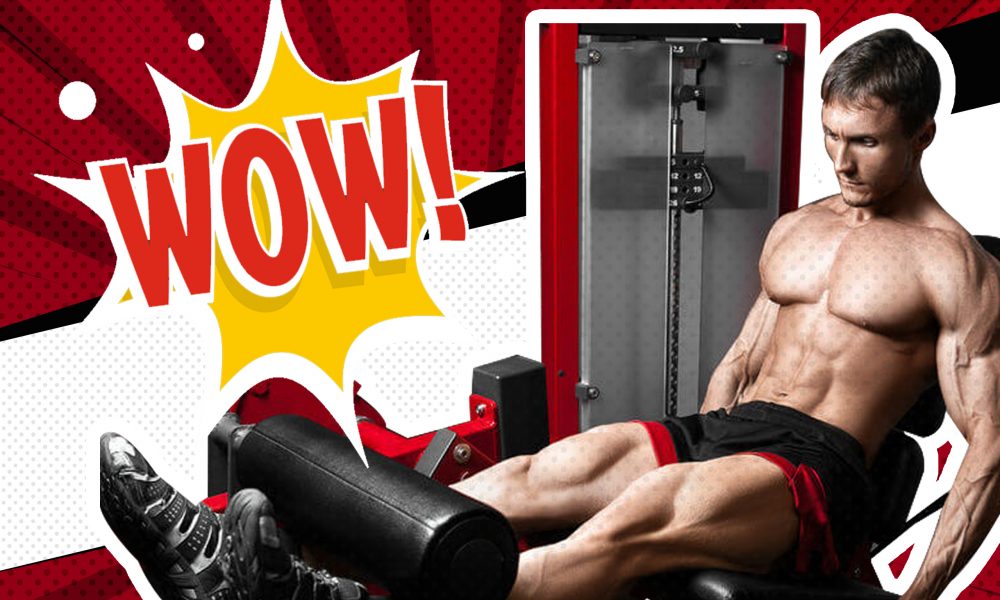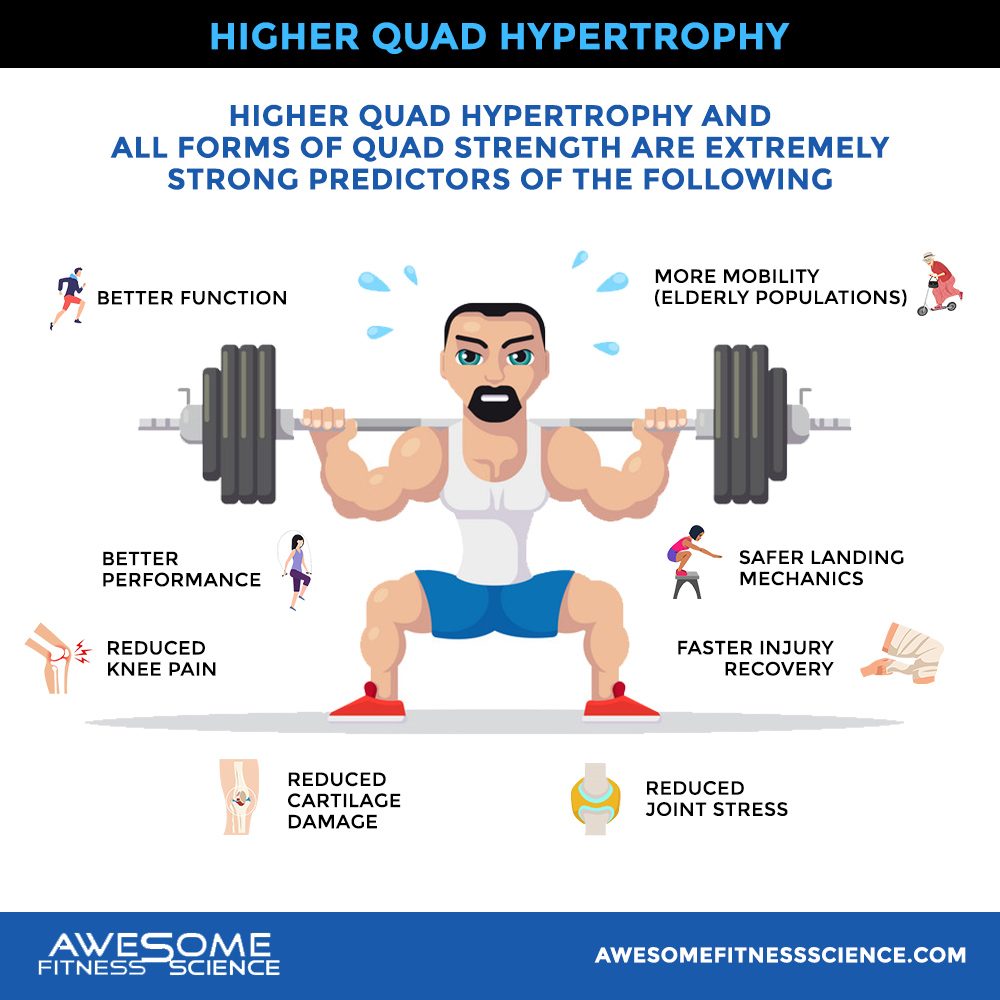
Reverse Dieting – The Fairytale People Still Believe In
Have you heard of reverse dieting? If you haven’t, don’t look it up because there’s an endless stream of YouTube videos and articles regurgitating this nonsense.

Every gym I’ve worked at, there was always that one overly functional trainer or group of trainers who demonized the leg extension. According to these dorks, the leg extension is non-functional because nobody moves that way in real life and apparently the torque from the machine will grind your knee joint into a million pieces.
When I hear crap like this, it makes me want to slap these dorks off a bridge. Like a really high bridge that’ll cripple them out of the industry so they can’t regurgitate bad advice anymore.
I’m obviously kidding, well partially, but the point I’m getting at is the leg extension has always been innocent. The leg extension is like that kid in High School who sits in the corner avoiding drama, yet all these clueless losers talk smack about him.
If you’ve heard nasty things about this machine, here’s why you should reconsider.
Some trainers propose leg extensions are bad for the knee joint or surrounding connective tissues.
However, even at the most stressful angle (0-30 degrees), leg extensions apply far less stress than what’s necessary to damage tissue (1). In fact, leg extensions apply only a fraction of the force required to be a problem (2,4). Walking and jumping actually apply similar force levels (3).
Leg extension haters will say squat are safer yet squats apply ten times as much force on the PCL, a key ligament within the knee that aids in ACL strength (5-8).
Direct ACL strain is also similar between squats and leg extensions and may even be higher with squats (9). To be clear, I’m not saying squats are bad for your knees, but prescribing squats and saying leg extensions are dangerous is hypocritical.
So not only are leg extensions not bad for you, they could very well be what you need to manage knee pain (10). Leg extensions are the only movement pattern that can shorten all the heads of the quads including the rectus femoris (front of thigh) which can’t be fully shortened from squats.
The front of your quads simply don’t activate and grow as well without leg extensions (11,12). The idea that the pattern of knee extension being a non-functional pattern so it doesn’t need to be trained is idiotic. Your body possesses that pattern and recruits muscles differently from it so to cover your bases, leg extensions should be included (13,30).
Including leg extensions early on in a rehab setting is fine as well (14). Your knee won’t explode like the haters say.
In fact, research is very clear that squats plus leg extensions are better than squats alone for both PCL and ACL reconstruction along with strength and function (15,16).

For example, one study took athletes suffering from jumper’s knee (patellar tendinopathy) and had them do 12 sets of 8 leg extensions every week for a month (27). Their knee pain significantly decreased and their strength/function improved.
I personally have terrible knees from years of Wrestling and Jiu-jitsu. I can tell you leg extensions have been majorly helpful in managing my knee pain and knee function. I used to be skeptical of this machine in my first year as a trainer, but the rumors simply aren’t true.
Over the years, I’ve had numerous people from old ladies to athletic knee rehabbers use leg extensions consistently. They feel great doing them and we usually do them for higher reps (12+).
We still apply progressive overload just like you should with any other exercise by increasing weight and reps when appropriate.
It also goes without saying, this is only possible if your form is strict and you’re controlling the weight on the way down instead of mindlessly swinging your legs like a spastic monkey. Most people who experience knee pain on leg extensions are either using too much weight or lifting with garbage technique.
As for setup, I suggest setting the seat relatively far back to get a deeper stretch in the quads and to grip the handles firmly for stability (28). You should set the pad at about ankle level, but you can move it higher if you’re worried about additional knee stress (29). Lastly, if your leg extension has a seatbelt, use it.
You can also get creative with doing leg extensions in different ways.
Here are my 3 favorite leg extension variations are:
But long story short, anybody looking to rehab their knees, strengthen their quads, or grow thunder like thighs, you better include some leg extensions. Oh and be sure to send this article to any dummy that tries to say otherwise.
1. Cohen . “Patellofemoral Stresses during Open and Closed Kinetic Chain Exercises. An Analysis Using Computer Simulation.” The American Journal of Sports Medicine, U.S. National Library of Medicine, pubmed.ncbi.nlm.nih.gov/11476390/.
2. Escamilla . “Anterior Cruciate Ligament Strain and Tensile Forces for Weight-Bearing and Non-Weight-Bearing Exercises: a Guide to Exercise Selection.” The Journal of Orthopaedic and Sports Physical Therapy, U.S. National Library of Medicine, pubmed.ncbi.nlm.nih.gov/22387600/.
3. Shelburne, Kevin B., et al. “Pattern of Anterior Cruciate Ligament Force in Normal Walking.” Journal of Biomechanics, Elsevier, 23 Jan. 2004, www.sciencedirect.com/science/article/abs/pii/S0021929003003944?via=ihub.
4. Woo . “Tensile Properties of the Human Femur-Anterior Cruciate Ligament-Tibia Complex. The Effects of Specimen Age and Orientation.” The American Journal of Sports Medicine, U.S. National Library of Medicine, pubmed.ncbi.nlm.nih.gov/1867330/.
5. Escamilla . “Biomechanics of the Knee during Closed Kinetic Chain and Open Kinetic Chain Exercises.” Medicine and Science in Sports and Exercise, U.S. National Library of Medicine, pubmed.ncbi.nlm.nih.gov/9565938/.
6. Harner . “The Human Posterior Cruciate Ligament Complex: an Interdisciplinary Study. Ligament Morphology and Biomechanical Evaluation.” The American Journal of Sports Medicine, U.S. National Library of Medicine, pubmed.ncbi.nlm.nih.gov/8600743/.
7. KD;, Kennedy. “Tension Studies of Human Knee Ligaments. Yield Point, Ultimate Failure, and Disruption of the Cruciate and Tibial Collateral Ligaments.” The Journal of Bone and Joint Surgery. American Volume, U.S. National Library of Medicine, pubmed.ncbi.nlm.nih.gov/1262366/.
8. Tumminello, Nick. “Are the Seated Leg Extension, Leg Curl, and Adduction Machine Exercises Non-Functional or Risky?” NSCA, www.nsca.com/education/articles/ptq/are-the-seated-leg-extension-leg-curl-and-adduction-machine-exercises-non-functional-or-risky/.
9. Beynnon . “The Strain Behavior of the Anterior Cruciate Ligament during Squatting and Active Flexion-Extension. A Comparison of an Open and a Closed Kinetic Chain Exercise.” The American Journal of Sports Medicine, U.S. National Library of Medicine, pubmed.ncbi.nlm.nih.gov/9397272/.
10. BD;, Fleming. “Open- or Closed-Kinetic Chain Exercises after Anterior Cruciate Ligament Reconstruction?” Exercise and Sport Sciences Reviews, U.S. National Library of Medicine, pubmed.ncbi.nlm.nih.gov/16006821/.
11. Ebben . “Muscle Activation during Lower Body Resistance Training.” International Journal of Sports Medicine, U.S. National Library of Medicine, pubmed.ncbi.nlm.nih.gov/18975260/.
12. Ema . “Inhomogeneous Architectural Changes of the Quadriceps Femoris Induced by Resistance Training.” European Journal of Applied Physiology, U.S. National Library of Medicine, pubmed.ncbi.nlm.nih.gov/23949789/.
13. Stensdotter . “Quadriceps Activation in Closed and in Open Kinetic Chain Exercise.” Medicine and Science in Sports and Exercise, U.S. National Library of Medicine, pubmed.ncbi.nlm.nih.gov/14652500/.
14. Fukuda . “Open Kinetic Chain Exercises in a Restricted Range of Motion after Anterior Cruciate Ligament Reconstruction: a Randomized Controlled Clinical Trial.” The American Journal of Sports Medicine, U.S. National Library of Medicine, pubmed.ncbi.nlm.nih.gov/23423316/.
15. N;, Jewiss. “Open versus Closed Kinetic Chain Exercises Following an Anterior Cruciate Ligament Reconstruction: A Systematic Review and Meta-Analysis.” Journal of Sports Medicine (Hindawi Publishing Corporation), U.S. National Library of Medicine, pubmed.ncbi.nlm.nih.gov/28913413/.
16. AI;, Perriman. “The Effect of Open- Versus Closed-Kinetic-Chain Exercises on Anterior Tibial Laxity, Strength, and Function Following Anterior Cruciate Ligament Reconstruction: A Systematic Review and Meta-Analysis.” The Journal of Orthopaedic and Sports Physical Therapy, U.S. National Library of Medicine, pubmed.ncbi.nlm.nih.gov/29685058/.
17. TE;, Schmitt. “The Impact of Quadriceps Femoris Strength Asymmetry on Functional Performance at Return to Sport Following Anterior Cruciate Ligament Reconstruction.” The Journal of Orthopaedic and Sports Physical Therapy, U.S. National Library of Medicine, pubmed.ncbi.nlm.nih.gov/22813542/.
18. RM;, Lepley. “Quadriceps Strength, Muscle Activation Failure, and Patient-Reported Function at the Time of Return to Activity in Patients Following Anterior Cruciate Ligament Reconstruction: A Cross-Sectional Study.” The Journal of Orthopaedic and Sports Physical Therapy, U.S. National Library of Medicine, pubmed.ncbi.nlm.nih.gov/26471854/.
19. Wang . “Relationship between Quadriceps Strength and Patellofemoral Joint Chondral Lesions after Anterior Cruciate Ligament Reconstruction.” The American Journal of Sports Medicine, U.S. National Library of Medicine, pubmed.ncbi.nlm.nih.gov/26093005/.
20. Schmitt . “Strength Asymmetry and Landing Mechanics at Return to Sport after Anterior Cruciate Ligament Reconstruction.” Medicine and Science in Sports and Exercise, U.S. National Library of Medicine, pubmed.ncbi.nlm.nih.gov/25373481/.
21. Kaya . “Women with Patellofemoral Pain Syndrome Have Quadriceps Femoris Volume and Strength Deficiency.” Knee Surgery, Sports Traumatology, Arthroscopy : Official Journal of the ESSKA, U.S. National Library of Medicine, pubmed.ncbi.nlm.nih.gov/20953760/.
22. GY;, Chiu. “The Effects of Quadriceps Strengthening on Pain, Function, and Patellofemoral Joint Contact Area in Persons with Patellofemoral Pain.” American Journal of Physical Medicine & Rehabilitation, U.S. National Library of Medicine, pubmed.ncbi.nlm.nih.gov/22248804/.
23. RP;, Rixe. “A Review of the Management of Patellofemoral Pain Syndrome.” The Physician and Sportsmedicine, U.S. National Library of Medicine, pubmed.ncbi.nlm.nih.gov/24113699/.
24. Fiatarone . “High-Intensity Strength Training in Nonagenarians. Effects on Skeletal Muscle.” JAMA, U.S. National Library of Medicine, pubmed.ncbi.nlm.nih.gov/2342214/.
25. SJ;, Maly. “Determinants of Self-Report Outcome Measures in People with Knee Osteoarthritis.” Archives of Physical Medicine and Rehabilitation, U.S. National Library of Medicine, pubmed.ncbi.nlm.nih.gov/16401446/.
26. L;, Mizner. “Quadriceps Strength and the Time Course of Functional Recovery after Total Knee Arthroplasty.” The Journal of Orthopaedic and Sports Physical Therapy, U.S. National Library of Medicine, pubmed.ncbi.nlm.nih.gov/16108583/.
27. van . “Do Isometric and Isotonic Exercise Programs Reduce Pain in Athletes with Patellar Tendinopathy in-Season? A Randomised Clinical Trial.” Journal of Science and Medicine in Sport, U.S. National Library of Medicine, pubmed.ncbi.nlm.nih.gov/26707957/.
28. McMahon . “Muscular Adaptations and Insulin-like Growth Factor-1 Responses to Resistance Training Are Stretch-Mediated.” Muscle & Nerve, U.S. National Library of Medicine, pubmed.ncbi.nlm.nih.gov/23625461/.
29. KB;, Pandy. “Dependence of Cruciate-Ligament Loading on Muscle Forces and External Load.” Journal of Biomechanics, U.S. National Library of Medicine, pubmed.ncbi.nlm.nih.gov/9391868/.
30.
“The Role of Exercise Selection in Regional Muscle Hypertrophy: A Randomized Controlled Trial.” Taylor & Francis, www.tandfonline.com/doi/abs/10.1080/02640414.2021.1929736?journalCode=rjsp20.
Grab my free Stupid Simple Scroll to Mastering Hypertrophy

Have you heard of reverse dieting? If you haven’t, don’t look it up because there’s an endless stream of YouTube videos and articles regurgitating this nonsense.

At first glance, these studies make it look like protein is impossible to be fattening even in a caloric surplus.

If you’ve ever attempted to lose weight, you might’ve noticed as you lose more weight, the journey gets tougher. You put in the exact same sacrifice day in and day out, but the results come slower and slower.